#mount washington valley
Explore tagged Tumblr posts
Text
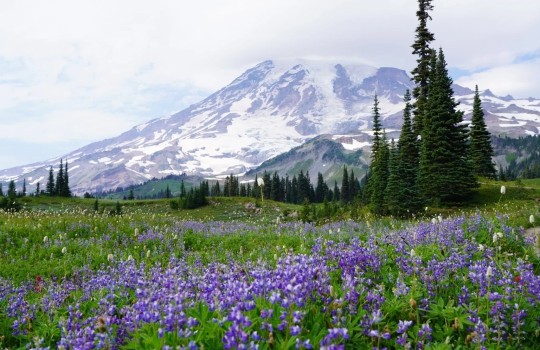
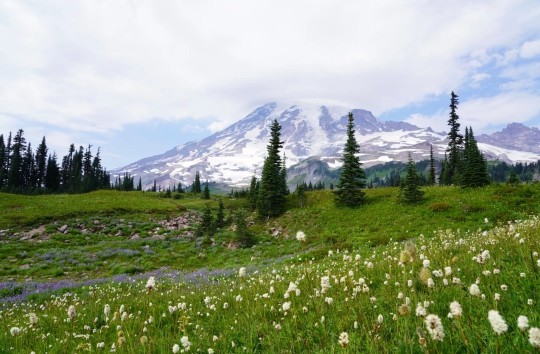
Mt. Rainier Skyline Trail & Lakes Trail by Liddy_L
#mt. rainier#mount rainier#nature#cottagecore#naturecore#nature aesthetic#washington#landscape#snowy mountains#mountain#meadow#valley#purple flowers#flower field#lavender field#lavender#mountains#pine trees#petitworld
2K notes
·
View notes
Text
Washington: you see, these are my oldest children, THE MAJOR GENERALS!!! I love em.
Major generals: hiii!!!
Washington: these are the middle children, the AIDES-DE-CAMP!!! YAY!!! They slay, I guess.
Aides: HENLOOOO
Washington: and those…uh…
*Chanting in the distance*
Washington: *sigh* that's the navy.
JPJ: TELL ME WHYYYYY
Navy himbos: AINTTTT NOTHIN BUT A HEARTACHEEEE
JPJ: SWEEEET CAROLINE
Navy Himbos: BA BA BA
Washington: *whispers* Look, I only know them during work hours and major battles.
#amrev#amrev slander#amrev memes#george washington#continental army#commodore john paul jones#captain john paul#captain john paul jones#captain john paul jones 1742#americanrevolution#american revolutionary war#american revolution#us history#kinda#valley forge#mount vernon#washington's aides#continental army generals#i dont think thats a tag man#IT IS NOW#:D#george washingdad
75 notes
·
View notes
Text

24 notes
·
View notes
Text
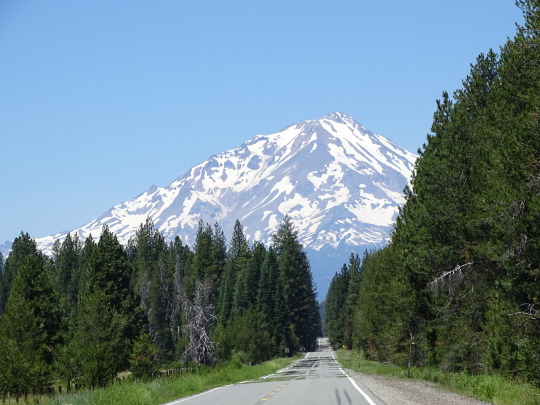







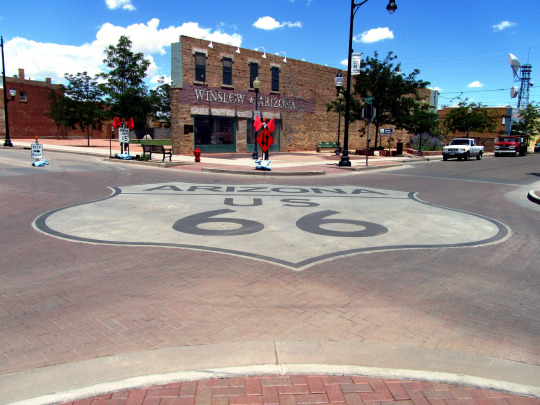


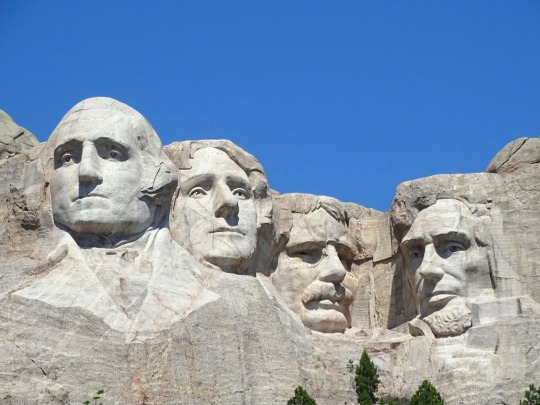
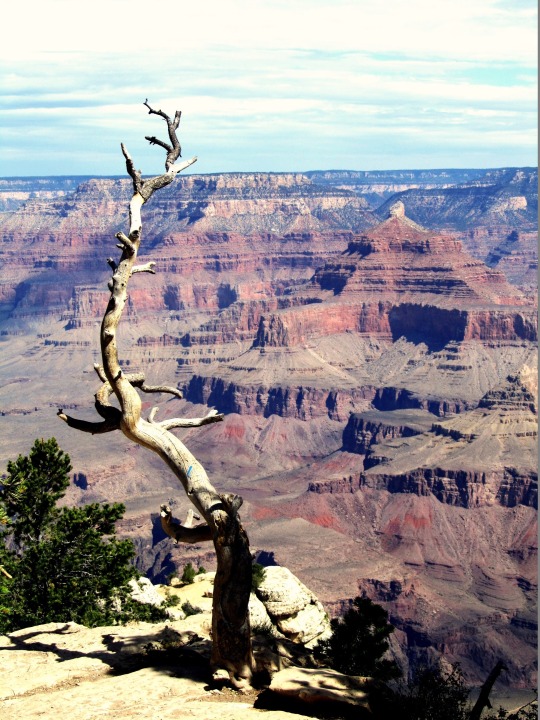
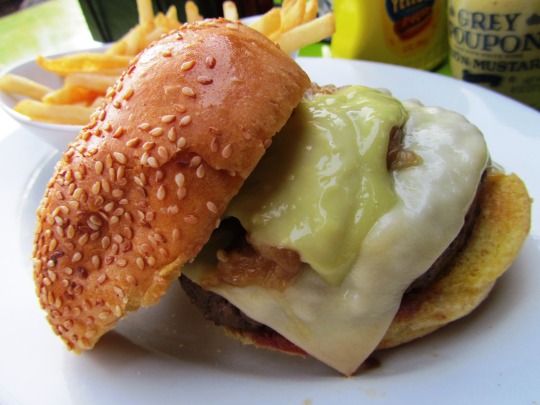
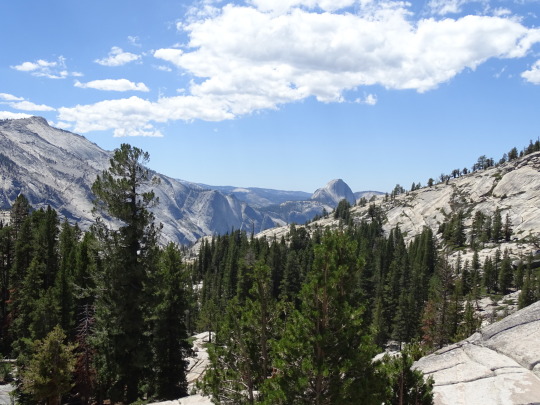
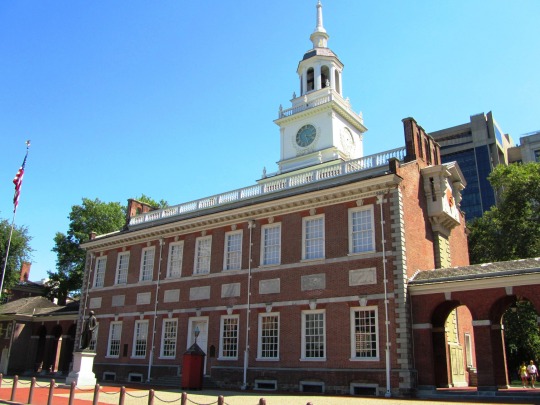
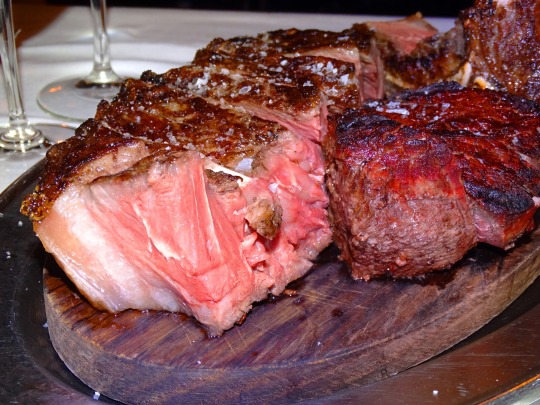

Fourth of July/Independence Day
Americans come together on July 4 to celebrate the nation’s birthday and Independence Day. On this day, most Americans enjoy grills in their backyards, at beaches, or in parks. Some partake in parades or marches and enjoy the fireworks that are often launched at dusk. We kick off the festivities with details, trivia, and anything else you need to know about Independence Day. Happy Fourth!
When is Fourth of July 2024?
The American glory of Red, White, and Blue, is celebrated on Independence Day on July 4.
History of Fourth of July
Although most of us already had this history lesson in school, we probably weren’t really paying attention as the clock ticked closer to recess or the end of the day. But we can’t fully appreciate our freedoms if we don’t know how we got them — and, more importantly, how close we came to losing them. The story of America’s independence is truly fascinating with more historical twists and turns than we can possibly get into here. But at least we can get you started with the basics.
In the 1700s, America wasn’t really a nation of ‘united states.’ Instead, there were 13 colonies with distinct personalities. From 1763 to 1773, Britain’s King George III increasingly placed pressure on the colonies as he and the British Parliament enacted a succession of draconian taxes and laws on them. Excessive taxes on British luxury goods like tea and sugar were designed to benefit the British crown without any regard for the hardships of the colonists. By 1764, the phrase “Taxation without representation is tyranny” spread throughout the colonies as the rallying cry of outrage.
The more the colonists rebelled, the more King George doubled down with force. Imagine if enemy soldiers not only had the right to enter your home but the soldiers could demand that you feed and house them. The Quartering Act of 1765 allowed British soldiers to do just that.
But the Stamp Act of 1765 became the straw that broke the colonists’ backs. Passed by Parliament in March, this act taxed any piece of printed paper, including newspapers, legal documents, ships’ papers — and even playing cards! As the colonial grumbling got louder and bolder, in the fall of 1768, British ships arrived in Boston Harbor as a show of force. Remember, the British Navy dominated the seas all over the world due to the far-reaching presence of the British Empire.
Tensions boiled over on March 5, 1770, in Boston Harbor during a street fight between a group of colonists and British soldiers. The soldiers fired shots that killed 47-year-old Crispus Attucks, the first American and Black man to die along with three other colonists in the Boston Massacre.
In 1773, the Boston Tea Party (from which today’s Tea Party Republicans get their name) erupted when colonists disguised as Mohican Indians raided a British ship, dumping all the tea overboard to avoid paying the taxes. Continued pressure led to resistance and the start of the Revolutionary War in the towns of Lexington and Concord when a militia of patriots battled British soldiers on April 19, 1775. Conditions were ripe for American independence.
When the first battles in the Revolutionary War broke out in April 1775, only a handful of colonists wished for total independence from Great Britain, and those who did were considered extremists.
However, halfway through the following year, many more colonists had come to lean more toward independence, as a result of growing hostility towards Britain and the spread of revolutionary views like those conveyed in the bestselling pamphlet published in early 1776 by Thomas Paine — “Common Sense.”
On June 7, 1776, the Continental Congress met at the Pennsylvania State House (later Independence Hall) in Philadelphia and Richard Henry Lee, the Virginia delegate, introduced a motion calling for the independence of the colonies. Amid heated debate, Congress rescheduled the vote on Lee’s resolution but appointed a five-man committee — including Thomas Jefferson of Virginia, John Adams of Massachusetts, Roger Sherman of Connecticut, Benjamin Franklin of Pennsylvania, and Robert R. Livingston of New York — to draft a formal statement justifying the defect from Great Britain.
On July 2, 1776, in a virtually unanimous vote, the Continental Congress voted in favor of Lee’s resolution for independence, and on July 4th, it formally adopted the Declaration of Independence, which had been written largely by Jefferson. Ultimately, the drafting of the Declaration of Independence was a contentious process. After much debate over what to include and what to leave out, Thomas Jefferson, tasked with pulling the document together, envisioned a nation where “Life, Liberty and the pursuit of happiness” crystallized the very meaning of being an American. The document proclaimed the 13 American colonies’ liberation from Britain and reaffirmed their rights as free men — declaring that they were no longer subject (and subordinate) to the monarch of Britain, King George III, and were now united, free, and independent states.
John Adams wrote to his wife Abigail that July 2 “will be celebrated, by succeeding Generations, as the great anniversary Festival” and that the celebration should include “Pomp and Parade…Games, Sports, Guns, Bells, Bonfires and Illuminations from one End of this Continent to the other.”
By an extraordinary coincidence, Thomas Jefferson and John Adams, the only two signatories of the Declaration of Independence later to serve as presidents of the United States, both died on the same day: July 4, 1826, which was the 50th anniversary of the Declaration. Although not a signatory of the Declaration of Independence, James Monroe, another Founding Father who was elected as president, also died on July 4, 1831, making him the third President who died on the anniversary of independence. The only U.S. president to have been born on Independence Day was Calvin Coolidge, who was born on July 4, 1872.
Fourth of July timeline
1763–1773
A Taxing Time
Britain’s King George III subjects colonial America to harsh taxes and laws, which benefits the Crown, not the colonists.
1765
Stamp Act
British Parliament's so-called Stamp Act taxes the colonists on any piece of printed paper including newspapers, legal documents, ships’ papers, and even playing cards.
1770
Shots Heard
British soldiers fire shots that kill 47-year-old Crispus Attucks, the first American and black man to die along with three other colonists in the Boston Massacre.
1773
Boston Tea Party
Disguised colonists take over a British ship and dump all the British tea overboard to avoid paying the taxes for it.
July 4, 1776
Declaration of Independence
After spending two days on revisions, the Continental Congress approves the historical document's final wording.
1941
Declaration of a Holiday
Independence Day becomes a federal holiday.
1950
Establishing Independence Day Traditions
Barbecues, parades, flag-raising ceremonies, and fireworks become the norm on Independence Day.
1976
Bicentennial
Americans celebrate the country's 200th birthday — the U.S. Mint issues a special Bicentennial quarter — with new designs featuring all 50 states.
INDEPENDENCE DAY TRADITIONS
American Independence Day parades go way back. By the summer of 1776, Americans celebrated the ‘death’ of British rule with mock funerals, revelry, and feasting. Americans still love to celebrate — and if you’re seeking a truly authentic experience, travel to Bristol, Rhode Island, home of America’s oldest Independence Day parade since 1785. Watch fife and drum corps marching bands, cartoon characters, and celebrities in vintage cars.
On Independence Day, we haul out family recipes for chili, barbecue ribs, chicken, and even tofu. We savor Louisiana gumbo and Maine lobster boils. There are zesty potato salads and delicious sweet corn roasted on the cob. Pies and cakes are laid out. Independence Day lets you get your patriotic grub on.
They chirp, whiz, and bang. Fireworks originated with the ancient Chinese, spread to Europe, and later added colorful displays to early American Independence Day events. Both Boston and Philadelphia launched fireworks on July 4, 1777. John Adams told his wife, Abigail, that Independence Day “ought to be solemnized with pomp and parade, bonfires and illumination.” This year, enjoy your Independence Day finale with a phantasmagorical fireworks display!
INDEPENDENCE DAY BY THE NUMBERS
2.5 million – the estimated number of people living in the newly independent nation in 1776.
327 million – the estimated population of the country in 2018.
56 – the number of signers of the Declaration of Independence.
1st – signer was John Hancock.
70 – the age of the oldest of the signers, Benjamin Franklin.
$4.0 million – the dollar value of U.S. imports of American flags in 2013.
$781,222 – the dollar value of U.S. flags exported in 2013.
$302.7 million – the annual dollar value of shipments of fabricated flags, banners, and similar emblems by the country’s manufacturers.
1 in 4 – the number of people who will set off their own fireworks.
150 million – the number of wieners consumed on the holiday nationwide.
Fourth of July FAQs
What does the 4th of July mean?
The 4th of July is America’s Independence Day, and the annual celebration of the nation.
How old is America today?
As of 2021, the United States of America is 245 years old.
What is the most famous text in the Declaration of Independence?
The best-known part of the Declaration of Independence is “We hold these Truths to be self-evident, that all Men are created equal, that they are endowed by their Creator with certain unalienable Rights, that among these are Life, Liberty and the Pursuit of Happiness … “
What fun ways can I celebrate Independence Day?
Parades and grills are commonplace on Independence Day but if you’re looking to go the extra mile when we suggest you take a look at our list of Fourth of July nail ideas to get you in the mood for celebrating.
Fourth of July Activities
Read the Declaration of Independence: Most Americans have never actually read the Declaration of Independence. But if it weren't for this short but historically significant document, they may not have been able to spend the day grilling or lighting fireworks, and definitely wouldn't have had the day off.
Watch fireworks: It's a blast — in more ways than one. Gazing at fireworks on the Fourth is a tradition that goes back centuries. In fact, John Adams alluded to this type of celebration in a letter he wrote to his wife Abigail on July 3, 1776.
Visit a national landmark or historical site: America is full of fascinating historical landmarks and sites. No matter where in the country you live, there is almost certainly a site of historical importance nearby. Some ideas could include a Native American reservation, a Civil War battleground, a government building, or a war memorial.
5 Fascinating Facts About The Declaration Of Independence
John Adams refused July 4: Because the actual vote for independence took place on July 2, 1776, John Adams refused to recognize celebrations for July 4.
Technically… The Declaration of Independence was finalized on July 4, but most of the signers actually signed the document on August 2, 1776.
Edits and revisions: There were a total of 86 edits made to the original draft written by Thomas Jefferson.
Independence wasn’t the only reason: The Declaration of Independence was penned down formally so that colonies seeking foreign allies could legally declare themselves free from the British.
It’s not a map, but… There isn’t a treasure map as shown in the movie “National Treasure,” but there is actually something written on the back of the Declaration of Independence — “Original Declaration of Independence dates 4th July 1776.”
Why We Love Fourth of July
It's the most delicious day of the summer: There are few days of the year that offer as much food variety as the Fourth of July. Steak? Check. Chicken wings? Yep. Fresh strawberry pie? Absolutely. Macaroni and cheese? You got it. No matter what you're craving, it's sure to be available on Independence Day.
We're all in this together: Admit it, the Fourth of July makes you feel giddy. Maybe it's the parades, the BBQs, or, most likely, the fireworks. This is the one night of the year you can watch the sky light up, while surrounded by children laughing, dogs barking, and patriotic music playing.
You can wear whatever you want — as long as it's red, white, and blue: That bandana you never get to wear? That decades-old T-shirt with an American flag on it? Those are all fair game on Independence Day — as long as they're red, white, and blue.
Source
#Independence Day#IndependenceDay#FourthOfJuly#travel#original photography#vacation#tourist attraction#landmark#cityscape#architecture#landscape#New York City#Grand Canyon National Park#Washington DC#Mount Rushmore National Memorial#Chicago Hot Dog#Original 5 Napkin Burger#Porterhouse for 3#steak#Yosemite National Park#Arches National Park#US flag#Monument Valley#4 July 1776#anniversary#US history#Alaska Highway
4 notes
·
View notes
Text

Rainbow over Skagit Valley Tulip Field in Mount Vernon, Washington
32 notes
·
View notes
Text
West Coast National Parks
Some of the most stunning National Parks can be found along the West Coast of the United States. This area of the US has 14 different national parks. Nine of them are in the state of California alone. To be fair, we are only considering the West Coast the states of Washington, Oregon, Nevada, and California. There are so many amazing sights to see within all of these amazing national parks. See…
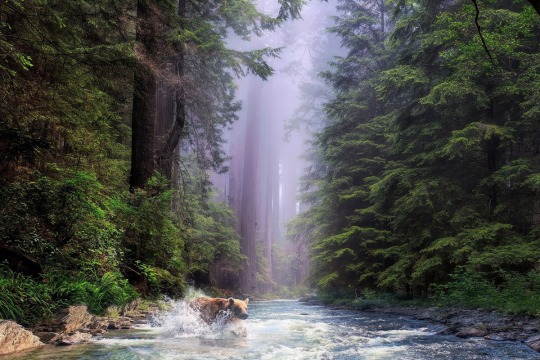
View On WordPress
#california#Death Valley#Mount Rainer#National Parks#nevada#oregon#road trip#travel#US National Parks#washington#west coast#yosemite
3 notes
·
View notes
Photo

Battles of Saratoga
The Battles of Saratoga (19 September and 7 October 1777) marked the climactic end of the Saratoga Campaign during the American Revolutionary War (1775-1783). The battles, which resulted in the surrender of an entire British army, convinced France to enter the war as a United States ally and are therefore considered a major turning point in the American Revolution.
Background
On 20 June 1777, General John Burgoyne led a British army of 8,300 men out of Canada, intent on seizing the Hudson River Valley and capturing Albany, New York. The Hudson River was considered by many to be the key to the American continent, and Burgoyne believed that its capture would allow him to isolate and suppress the New England colonies, thereby cutting the fledgling United States in half. Burgoyne led his army down Lake Champlain to the vital stronghold of Fort Ticonderoga, which the British effortlessly captured on 6 July. After defeating Ticonderoga's fleeing garrison at the Battle of Hubbardton (7 July), the British arrived at Fort Edward, on the Hudson. By this point, Burgoyne felt confident enough to write to Lord George Germain, the British colonial secretary, that he expected New England to fall in a matter of weeks.
Meanwhile, the Northern Department of the American Continental Army scrambled to mount a defense. General Philip Schuyler, who had previously overseen the Northern Department, was blamed for the loss of Ticonderoga and was relieved from command. He was replaced by General Horatio Gates, an ambitious officer who had long been seeking the glory of an independent command. On 3 August, Gates arrived at Stillwater, a small town along the Hudson where the ragtag units of the northern American army had begun to coalesce. Joining Gates at Stillwater were several officers and units who had been sent north by the American commander-in-chief, General George Washington, to aid in the Hudson's defense; these included General Benedict Arnold, a fiery-tempered soldier from Connecticut, as well as the popular New Englander General Benjamin Lincoln, and Virginian Colonel Daniel Morgan, whose Rifle Corps was already noted for its sharpshooting prowess. All told, Gates found approximately 8,500 effective troops at Stillwater.
As Gates' army continued to gather, the British expedition began to falter. On 15 August, nearly 1,000 of Burgoyne's German troops were killed, wounded, or captured by a Vermont militia at the Battle of Bennington. Meanwhile, a secondary British army had failed to capture Fort Stanwix on the Mohawk River and had retreated back into Canada, isolating Burgoyne's primary force. Despite these setbacks, and although his supplies were rapidly dwindling, Burgoyne refused to entertain the possibility of retreat and continued to push toward Albany. Gates, perhaps at Benedict Arnold's instigation, decided to meet this threat head-on and marched his army 10 miles (16 km) north toward the town of Saratoga. On 7 September, Gates' army occupied Bemis Heights, a bluff that sat about 200 feet (60 m) above the river and was covered in dense forests and ragged terrain. Polish engineer Tadeusz Kościuszko oversaw the construction of a series of fortifications atop the heights, which Gates' soldiers sheltered within.
Continue reading...
43 notes
·
View notes
Text
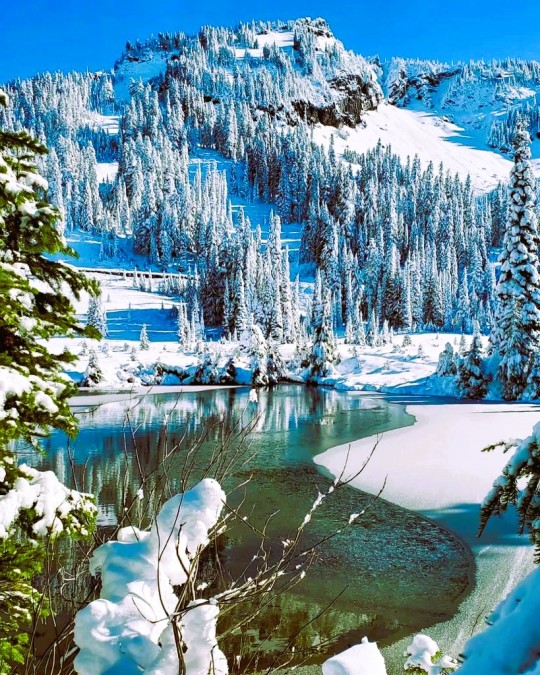
Mount Rainier National Park, Washington State, United States: Mount Rainier National Park is an American national park located in southeast Pierce County and northeast Lewis County in Washington state. The mountain rises abruptly from the surrounding land with elevations in the park ranging from 1,600 feet to over 14,000 feet. The highest point in the Cascade Range, Mount Rainier is surrounded by valleys, waterfalls, subalpine meadows, and 91,000 acres of old-growth forest. More than 25 glaciers descend the flanks of the volcano, which is often shrouded in clouds that dump enormous amounts of rain and snow. Wikipedia
86 notes
·
View notes
Text
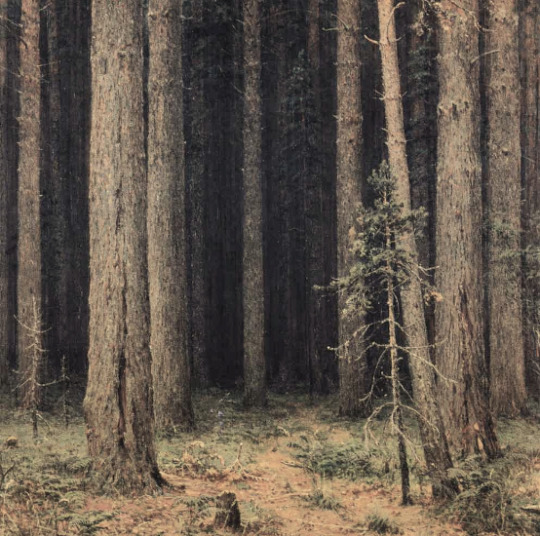


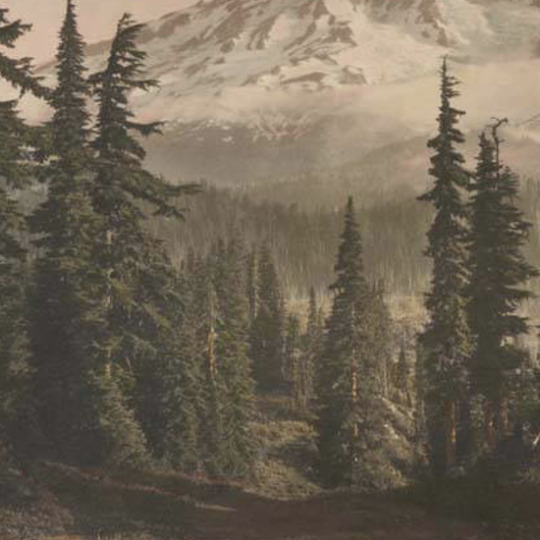

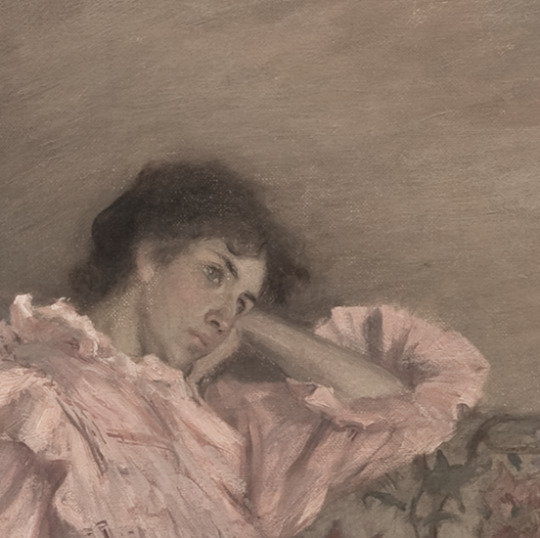


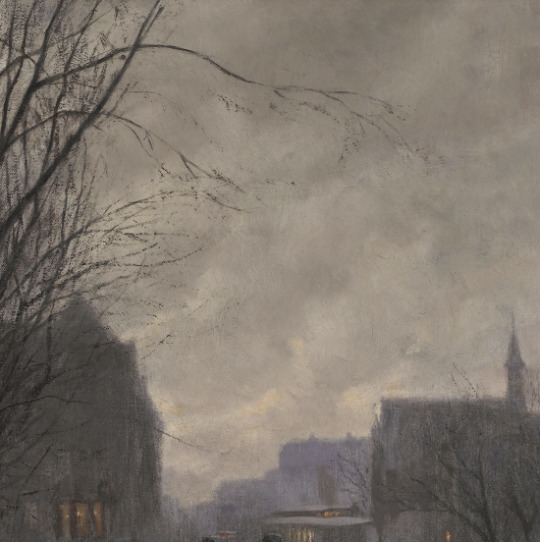
art history playlist moodboard – bella in new moon type of sad
Forest Reserve, Pine Grove – Ivan Shishkin // In the Bedroom – Peter Ilsted // Puyallup River Valley and Mount Rainier – Albert Bierstadt // South Side of Mount Rainier with Tree-Filled Valley in Foreground, Washington, 1920 – Asahel Curtis // Helgoland – Robert Russ // Carola Sitting on the Sofa – Gustaf Cederström // Interior in Paris – Harriet Backer // Pine Trees – Maksymilian Gierymski // Rainy Evening on Hennepin Avenue – Robert Koehler
#art history playlist moodboards#charlotte makes moodboards#charlotte's playlists#twilight soundtrack#twilight moodboard#twilight playlist#twilight aesthetic#twilight saga#new moon#new moon aesthetic#new moon moodboard#new moon soundtrack#new moon playlist#ivan shishkin#peter ilsted#albert bierstadt#harriet backer#maksymilian gierymski#music#my music taste#music moodboard#art#art history
79 notes
·
View notes
Text

Misty Valley, near Mount Ranier Washington State. #mtrainier #mountrainier #mistyvalley #wastate #washington #pnw #pacificnorthwest
49 notes
·
View notes
Text

The News Tribune, Tacoma, Washington - Thursday 22 February, 1973.
"Puyallup Valley Daffodil Festival princesses don for the first time informal attire consisting of mint green sweaters ribbed with mock turtle necklines and saddle shoulders. Mint green pants have flared legs and two mini-patch pockets accented with top stitching. White imitation leathar shoulder bags with two outside pockets prove to be fashionable and convenient. From left are Pri ncess Gwen Soine, Washington High School; Princess Faye Phillips, Bethel High School; Princess Jill Ford, Orting High School; Princess Judy Bumson of Mount Tahoma High School; and Princess Georgann Hawkins Lakes High School."
#georgann hawkins#true crime#victims#true crime research#ted bundy#serial killer#1970s#newspaper#clipping#newspaper clipping
20 notes
·
View notes
Text



📷 Fred Common, Hobbyist Photographer
🌹Skagit Valley, Washington - Tulip Festival 2019 — Mount Vernon, Washington — April 2019.
#photographers on tumblr#flowers#my photgraphy#my flower photography#original photography#annlynngilbertphotography
21 notes
·
View notes
Note
What's the itinerary? 👀
Hi, Anon! Happy to share.
My dream American Revolution trip itinerary, just including my must-sees, and a rough idea of transportation (still working on food stops and slipping in other points of interest):
Day 1:
Early morning flight to Boston, MA
Stay in Boston for 3 nights, 4 days
Rental car for Day 2 and 3
Boston Massacre Site
Boston Tea Party Ships & Museum
Bunker Hill Museum and Monument
Old North Church & Historic Site
Day 2:
Paul Revere House
Lexington Battle Green Tour, Lexington MA
Drive from Boston
Old North Bridge, Concord MA
Drive from Lexington
Day 3:
Adams National Historic Park, Quincy MA
Drive from Boston
General Nathaniel Greene Homestead, Coventry RI
Drive from Adams NHP
Day 4:
Early morning train/bus to Albany, NY
Stay in Albany 2 nights, 3 days
Rental car for Day 4 and 5
Saratoga National Historical Park, Stillwater NY
Drive from Albany
Fort Ticonderoga, Ticonderoga NY
Drive from Saratoga NHP
Day 5:
Schuyler Mansion tour
Washington’s Headquarters State Historic Site, Newbrugh NY
Drive from Albany
John Jay Homestead, Katonah NY
Drive from Washington Headquarters Newbrugh
Day 6:
Early morning train from Albany to New York City, NY
Stay in New York City for 4 nights, 5 days
Hamilton Grange National Memorial
Morris-Jumel Mansion
Day 7:
City Hall Park
Federal Hall
Fraunces Tavern Museum
Trinity Church & Cemetary
Day 8:
Museum of the City of New York
The Metropolitan Museum of Art
Day 9:
Van Cortlandt House Museum
Central Park
New York Historical Society Museum & Library
Weehawken Dueling Grounds/Hamilton Park, Weehawken, NJ
Take ferry to and from
Day 10:
Train/bus to Princeton, NJ
Stay in Princeton 2 nights, 3 days
Rental car for Day 11
Princeton Battlefield State Park
Day 11:
Monmouth Battlefield State Park, Manalapan, NJ
Drive from Princeton
Morristown National Historical Park, Morristown NJ (Includes: Ford Mansion/Washington’s Headquarters, Schuyler-Hamilton House, Jockey Hollow)
Drive from Monmouth Battlefield Park
Day 12:
Early train/bus to Trenton, NJ
Old Barracks Museum
Washington Crossing Park, Washington Crossing, PA
Train/bus from Trenton
Train/Bus from Washington Crossing to Philadelphia PA
Stay in Philadelphia 3 nights, 4 days
Rental car for Day 15 and 16
Day 13:
Independence Hall
Liberty Bell Center
First Bank of the United States
Carpenter’s Hall
Day 14:
Museum of the American Revolution
Elfreth’s Alley Museum
Day 15:
Valley Forge National Historical Park
Drive from Philadelphia
Moland House (Washington Headquarters), Warwick Township PA
Drive from Valley Forge NHP
Peter Wentz Farmstead (Washington Headquarters), Lansdale PA
Drive from Moland House
Day 16:
Cliveden of the National Trust (Chew House)
Drive from Philadelphia
Brandywine Battlefield (park), Chadds Ford PA
Drive from Cliveden
Afternoon or evening train from Philadelphia to Alexandria, VA
Stay in Alexandria for 2 nights, 3 days
Rental car for Day 18
Day 17:
George Washington’s Mount Vernon
Train/bus from Alexandria, VA
National Archives Museum, Washington DC
Train/bus from Alexandria, VA
Day 18:
James Madison’s Montpelier, Montpelier Station, VA
Drive from Alexandria, VA
Evening train from Alexandria to Williamsburg, VA
Stay in Williamsburg 2 nights
Day 19:
Colonial Williamsburg
Day 20:
Yorktown Battlefield
American Revolution Museum at Yorktown
Train/bus/taxi from Williamsburg
Day 21:
Fly from Williamsburg to Charleston, SC
Stay in Charleston for 4 nights, 5 days
Rental car for Days 22-24
South Carolina Historical Society Museum
Day 22:
Savannah History Museum, Savannah GA
Battlefield Park Heritage Center, Savannah GA
Drive from Charleston
Day 23:
Cowpens National Battlefield, Cowpens SC
Drive from Charleston
Eutaw Springs Battlefield Park, Eutawville SC
Drive from Cowpens
Day 24:
Magnolia Plantation and Gardens
Mempkin Abbey (site of Laurens family graves)
Day 25:
Fly home from Charleston SC
#my real challenge is finding someone to go with me#fun part about being visually impaired is you can’t legally drive#amrev#trips#road trip#the american revolution#american revolutionary war#new england#dream travel#traveling#18th century history
10 notes
·
View notes
Text
1. Acadia National Park, Maine
2. American Samoa National Park, American Samoa
3. Arches National Park, Utah
4. Badlands National Park, South Dakota
5. Big Bend National Park, Texas
6. Biscayne National Park, Florida
7. Black Canyon of the Gunnison National Park, Colorado
8. Bryce Canyon National Park, Utah
9. Canyonlands National Park, Utah
10. Capitol Reef National Park, Utah
11. Carlsbad Caverns National Park, New Mexico
12. Channel Islands National Park, California
13. Congaree National Park, South Carolina
14. Crater Lake National Park, Oregon
15. Cuyahoga Valley National Park, Ohio
16. Death Valley National Park, California & Nevada
17. Denali National Park, Alaska
18. Dry Tortugas National Park, Florida
19. Everglades National Park, Florida
20. Gates of the Arctic National Park, Alaska
21. Gateway Arch National Park, Missouri
22. Glacier Bay National Park, Alaska
23. Glacier National Park, Montana
24. Grand Canyon National Park, Arizona
25. Grand Teton National Park, Wyoming
26. Great Basin National Park, Nevada
27. Great Sand Dunes National Park, Colorado
28. Great Smoky Mountains National Park, Tennessee & North Carolina
29. Guadalupe Mountains National Park, Texas
30. Haleakalā National Park, Hawaii
31. Hawai’i Volcanoes National Park, Hawaii
32. Hot Springs National Park, Arkansas
33. Indiana Dunes National Park, Indiana
34. Isle Royale National Park, Michigan
35. Joshua Tree National Park, California
36. Katmai National Park, Alaska
37. Kenai Fjords National Park, Alaska
38. Kings Canyon National Park, California
39. Kobuk Valley National Park, Alaska
40. Lake Clark National Park, Alaska
41. Lassen Volcanic National Park, California
42. Mammoth Cave National Park, Kentucky
43. Mesa Verde National Park, Colorado
44. Mount Rainier National Park, Washington
45. New River Gorge National Park and Preserve, West Virginia
46. North Cascades National Park, Washington
47. Olympic National Park, Washington
48. Petrified Forest National Park, Arizona
49. Pinnacles National Park, California
50. Redwood National Park, California
51. Rocky Mountain National Park, Colorado
52. Saguaro National Park, Arizona
53. Sequoia National Park, California
54. Shenandoah National Park, Virginia
55. Theodore Roosevelt National Park, North Dakota
56. Virgin Islands National Park, United States Virgin Islands
57. Voyageurs National Park, Minnesota
58. White Sands National Park, New Mexico
59. Wind Cave National Park, South Dakota
60. Wrangell—St. Elias National Park, Alaska
61. Yellowstone National Park, Wyoming, Montana & Idaho
62. Yosemite National Park, California
63. Zion National Park, Utah
9 notes
·
View notes
Note
I just wanna say, DUDE. The majority of what I know about amrev comes from your blog. Your in-depth posts literally have me FOAMING AT THE MOUTHH I don't have much time to read longer books due to school but I wanna feed my obsession so do you have any books on the shorter side or some websites/archives I can research/read a bit quicker? If not it's totally fine.
Also off topic but I'm loving "It Began About Dusk" on AO3 <3
OH MY GOD THE FLATTERY‼️‼️‼️ you’re making me blush here anon. im so glad that you find my posts helpful!!! AND IM SO GLAD YOU LIKE MY FICS i have a chapter of it began about dusk in the drafts rn so you’ll get more content soon
now this is a tricky question because im absolutely insane and ive barely ever read short books. right now im reading His Excellency by Joseph J Ellis and i recommend it!! its only around 2-300 pages which is the shortest history book ive got VSJWBW primary sources can be really good to get in book form, things like Common Sense by Thomas Paine, Rules of Civility and Decent Behavior (Washington’s rule book), and Memoir of Lieut. Col. Tench Tilghman, Secretary and aid to Washington are all primary sources i have on my shelf that are short and sweet.
i also have Hercules Mulligan by Micheal J. Obrien which i haven’t read but is VERY small. there is also James Monroe by Gary Hart which is short but i have not finished (i dont even truly remember reading it but i annotated part of it apparently), The Drillmaster of Valley Forge by Paul Lockhart is a little longer than those others, but still isn’t chernow levels of wrong, but i also haven’t read that one. Thomas Jefferson and the Tripoli Pirates by Brian Kilmeade and Don Yaeger isn’t the most serious history book, but it is pretty good and an easy read.
as for secondary source websites, start with encyclopedias ie Britannica, which post short articles on different historical figures and events that give you the overview. from there im gonna point you to the National Park Service. this is the best thing the US government has ever made for researchers. this is all your battlefields, winter encampments, historical reproductions, and former capitals. also check out private residences turned museums, such as Mount Vernon, Monticello, and Schuyler Mansion. these institutions have an abundance of easily accessible information on more than just the people who lived there.
now the Library of Congress was a good decision on Jefferson’s part, but it can be inaccessible if you don’t know how to use it well because their website is one of my least favorite things about being alive. so instead, i recommend using Founders Online for any primary source regarding the founding fathers or amrev figures. the Washington Papers are filled to the brim with almost everything that went out of headquarters during all 8 years of the war. founders online is the shit
all of these websites i’ve mentioned are free to access, because i do not pay money on any research tools besides books out of spite for late stage capitalism. also any primary source is 100% accessible online. that includes memoirs and court transcripts, which can be very helpful
also i really do recommend watching documentaries and informational videos on the subjects you’re interested in while doing work or other things if you’re someone who does that (ik some people don’t have background noise but im just assuming you’re as neurodivergent as i am) because you can absorb just a little of that information and it being about a subject of interest can make academics seem a little less miserable!
i hope this is helpful and if you have absolutely any further questions, feel free to ask. i know im very privileged to have the time and resources to read long ass books, which is why i very freely share the information i absorb with the public bc i believe education should never be gatekept by anyone. so if you have any questions, im happy to research them for you, or at least point you in the right direction. love ya!!
16 notes
·
View notes
Text
Alaska: Igloo, Kodiak bear, Iditarod sled dog race, Denali
Hawaii: pearl harbor, pineapple
washington: Space Needle, apple, mt st helens, rainier national park
oregon: roses, lighthouse, crater lake, oregon trail, hiking
california: redwood tree, white water rafting, gold, golden gate bridge, silicon valley, yosemite national park, wine country, sierra nevada mountains, hollywood, joshua tree
nevada: silver, las vegas strip, hoover dam
idaho: gemstones, potatoes
montana: rocky mountains, glacier national park, grizzly bear, bison
wyoming: yellowstone national park, old faithful geyser, bucking bronco
utah: great salt lake, zion national park, skiing
arizona: lake mead, grand canyon national park, montezuma castle, turquoise, saguaro cactus
new mexico: pueblo, yucca plant, carlsbad caverns
colorado: rocky mountain national park, columbine flower, elk
north dakota: oil, wind energy
south dakota: crazy horse memorial, the badlands, mount rushmore
nebraska: chimney rock, bald eagle, train
kansas: tornadoes, dodge city, sunflower
oklahoma: tomato, wheat, osage shield
texas: cattle, prickly pear cactus, oil refinery, the alamo, NASA Johnson space Center
Minnesota: lake of the woods, wolf, deer
iowa: prairie grass, corn
missouri; Hog, gateway arch
arkansas: razorback hog, banjo
louisiana: crayfish, mardi gras, jazz music
wisconsin: dairy
illinois: Willis tower, tractor, lincoln
michigan: copper, iron ore, automobile manufacturing, motown
indiana: Car
ohio: Rock and Roll Hall of Fame, tires
pennsylvania: street mill, liberty bell
new jersey: constitution
maryland: blue crab
virginia: mount vernon
north carolina: wright brothers national memorial, tobacco farm, great smoky mountains national park, appalachian mountains
south carolina: fort sumter
georgia: peanuts, peach
florida: oranges, kennedy space center, alligator, everglades national park
alabama: cotton, civil rights movement
mississippi: magnolia
tennessee: country music
kentucky: horse racing
west virginia: coal
new york: apple tree, financial market, statue of liberty
massachusetts: american revolution
vermont: maple syrup
new hampshire: fall colors
maine: acadia national park, moose, lobster
And don’t make me repeat it!!!!!!!
7 notes
·
View notes